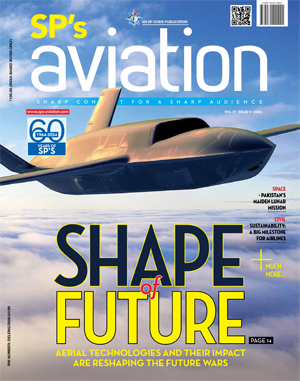INDIAN ARMED FORCES CHIEFS ON
OUR RELENTLESS AND FOCUSED PUBLISHING EFFORTS

SP Guide Publications puts forth a well compiled articulation of issues, pursuits and accomplishments of the Indian Army, over the years

I am confident that SP Guide Publications would continue to inform, inspire and influence.

My compliments to SP Guide Publications for informative and credible reportage on contemporary aerospace issues over the past six decades.
New Kids on the Block

The new regional airlines and those on the horizon are still few and far between.There’s room for many more to improve air connectivity to India’s distant airports. And they could certainly do with some encouragement.
Who would dispute the need to take the benefits of aviation to the remote parts of India? Yet, despite government measures and sops designed to give regional services a boost, aviation remains firmly a big-city affair—just 30 per cent of domestic passenger traffic does not pass through the six metros. One factor is the shortage of airports. This vast country has to manage with 127 airports (only 87 of them operational) plus six run by private operators. But the other main reason why regional aviation is in the doldrums is the conspicuous absence of dedicated regional operators. It is the mainline carriers themselves that operate some flights to small airports. And their heart is not in it.
All over the world, regional airlines are the only means by which thousands of towns and small cities are connected by air because the major carriers do not consider such routes to be commercially viable. Sometimes regional operators, with their smaller aircraft, are the only ones that can provide air services to airports with shorter runways and rudimentary facilities. In India, land scarcity is a major hurdle in the path of airport development and the issue is set to intensify in the coming years. So there’s no alternative to small regional carriers.
Regional Round-up
The Indian Government’s policy on scheduled regional air transport operations, introduced in August 2007, was meant to encourage start-ups by offering fuel to small aircraft at sharply reduced rates and by waiving landing and parking charges. However, despite almost 20 regional hopefuls, with about a dozen granted initial no-objection certificates (NOCs), only MDLR Airlines based in Gurgaon actually flew. MDLR launched operations in March 2007 during a major growth phase for Indian aviation; then, it was hit by steeply rising oil prices and suspended operations in November 2009. Nowadays it is better known for sleaze. From time to time other companies seemed keen to launch regional operations but nothing came of it. Some experts blame the strict norms regarding fleet size and other stringent preconditions for this sorry state of affairs.
However, at last there’s hope on the horizon. Last year, the Ministry of Civil Aviation granted NOCs valid for 18 months, to five applicants in order to commence regional services. In the southern region, there are Freedom Aviation and Air Pegasus; in the western region, Deccan Charters; and in the northern region, Indus Airways, Karina Airlines and Air Mantra. Will these newbies fly or will they join the likes of Jagson Airlines, Star Aviation, Luan Airways, Skyking, Akash Ganga Airlines and Air Dravida that obtained NOCs but fell by the wayside?
Mantra for Success
It is heartening that at least one of the newcomers recently commenced operations. July saw the launch of Air Mantra—the first regional airline to start flying in the last five years. Air Mantra (CEO Sandeep Bhatt) operates daily flights connecting Amritsar and Chandigarh, using two 17-seat Beechcraft 1900D turboprop aircraft. It may have started small but does not intend to remain so. In fact it has ambitious plans to ramp up operations, gradually expanding its network to connect other cities, including Jammu and Dharamshala, and buying larger aircraft like the ATR 72-600 and Bombardier Q400. Its mother company, Religáre Voyages Ltd, is an air charter company with a fleet of 12 aircraft ranging from five-seat turboprops to 17-seat jets.
Some industry experts question the timing of Air Mantra’s launch, because most airlines in India are struggling, and at least a couple of major ones are threatening to go belly-up. However, Air Mantra seems well placed to prosper since it has been wise enough to start small and convert its own planes in order to test the market. Religáre Voyage’s experience of five years as a non-scheduled carrier should also prove invaluable. The company has deep pockets, but if this experiment fails, it can always revert to its original air charter business without taking too big a hit.
Air Mantra sensibly sees its role as a feeder airline to the mainline carriers. It is also prudent enough to use small aircraft—currently the only scheduled airline to do so. Although high fuel prices mean that the global trend is towards larger aircraft, this does not apply to India where just 36 airports accept narrow-body jets like the Airbus A320 or Boeing B737. Their number is not likely to increase in a hurry due to land acquisition issues and so the future seems bright for small aircraft, especially turboprops. Another interesting aspect about Air Mantra is that it has chosen Amritsar International Airport as its hub. Parking aircraft at Amritsar overnight would save it from the hassles of finding space at the congested metros and large airports and would keep operating expenses down. Labour costs too would be much lower than at the metros.





